Teaching young children foreign languages is an ever developed process, with researchers, teachers, and parents themselves contributing to it. How do children learn best? How can I help my students learn and retain language material in the most effective way? These and other questions are always on my mind. And the summer vacation is one of the best moments for me to look back and reconsider some of the details of my approach and the general framework that guides my teaching during the course.
One of the classes I teach is the Chinese language to Primary and Secondary school students. I have always believed in using play activities in the classroom, and I use play-based learning regularly in this class as well. In this article, I will write about one particular activity that involves learning Chinese vocabulary through play-based learning and involving the sense of touch. Perhaps could also help teachers to bridge the gap between our new developmental and the academic perspectives on play.
Play-based learning
Play-based learning is essentially defined as ‘learning while at play’. And although some researchers are still debating on what exactly constitutes play, it has been consistently proven that this is how young children can improve their self-regulation abilities (1). Nowadays, it also could be a very consistent help for younger students in clarifying the relations between play and academic learning.
Under this approach, teaching a foreign language to young children occurs through play activities, songs, rhymes, finger games, physical movement, activation games, … – activities in which young children naturally engage and enjoy. Is there an activity that best benefits my students? Maybe base our lessons exclusively on singing? Maybe just playing games? The answer is no. On the contrary, it is important to integrate language learning with different types of activities, not separate them or prioritize one over the rest (2). The reason for this is that when several areas of the brain are activated simultaneously, children understand and retain information better.
Using play activities in the classroom has a lot of advantages (3):
• We allow children to take an active role in their learning process.
• They are engaging.
• They offer variety in the development of thought.
• The information learned is meaningful.
• Language learning material is presented in context.
• There is meaningful interaction between the learners.
One study (4) has also proven, that in addition to all that, play-based learning has a significant positive influence on grammar acquisition. Neuroscientists have found that play activates the brain in meaningful ways that rote memorization, testing, worksheets, and traditional classroom techniques do not.
Some teachers still believe that teaching young children through play activities is a waste of classroom time, but in fact, play-based learning is real learning. It allows for endless creative possibilities, for learning in a way that does not feel like learning but brings better results (5).
Learning through the senses
Learning through the senses is one of the aspects of play-based learning that today I want to dwell on in particular.
You may be used to learning vocabulary using your vision and hearing: you see the written form of the word, maybe a picture accompanying it, and hear the word’s pronunciation. Learning vocabulary through multiple senses, in addition to vision and hearing, has been proven more effective, in particular, using the motor functions of the body (moving around, gesturing) and the sense of touch (6).
How does it work? It appears that the brain learns foreign words (and other language learning material) much better when they are associated with information from different sensory organs. These associations help retain information as well as recover it later.
For young children, learning through the senses is natural: they experience the world through play, they make sense of it by hearing, touching, seeing, tasting, and smelling (7). This perception may be less present in primary school children than, for instance, in kindergarteners, but it is still there. Using play activities in the classroom that activate different senses (and thus different areas of the brain) takes advantage of the children’s natural perception of the world and makes learning much more effective.
In my classroom, I like to use materials that I create out of wood, cardboard, clay, or using watercolours. They do not only offer a welcome variety, something different from the so-called ‘boring’ textbooks but also allow to engage different senses and the sense of touch in particular.
Learning Chinese through the sense of touch
Chinese vocabulary presents certain challenges for young and adult learners alike: there are so many characters, some of which can seem rather similar; each character has a certain number of strokes that not only need to be copied but written in the right order as well.
To assist my students in learning Chinese vocabulary, I designed and created a language activity game made out of wood, featuring various characters representing some basic Chinese vocabulary words.
The language play activity
The materials used in this activity are fairly simple: square pieces of wood with various Chinese characters cut out on them. The characters are cut out deep enough so that you can feel the shape of the character even if you close your eyes. The pieces of wood are large enough for all the strokes of each character to be felt but small enough for children’s hands to hold and manipulate them.
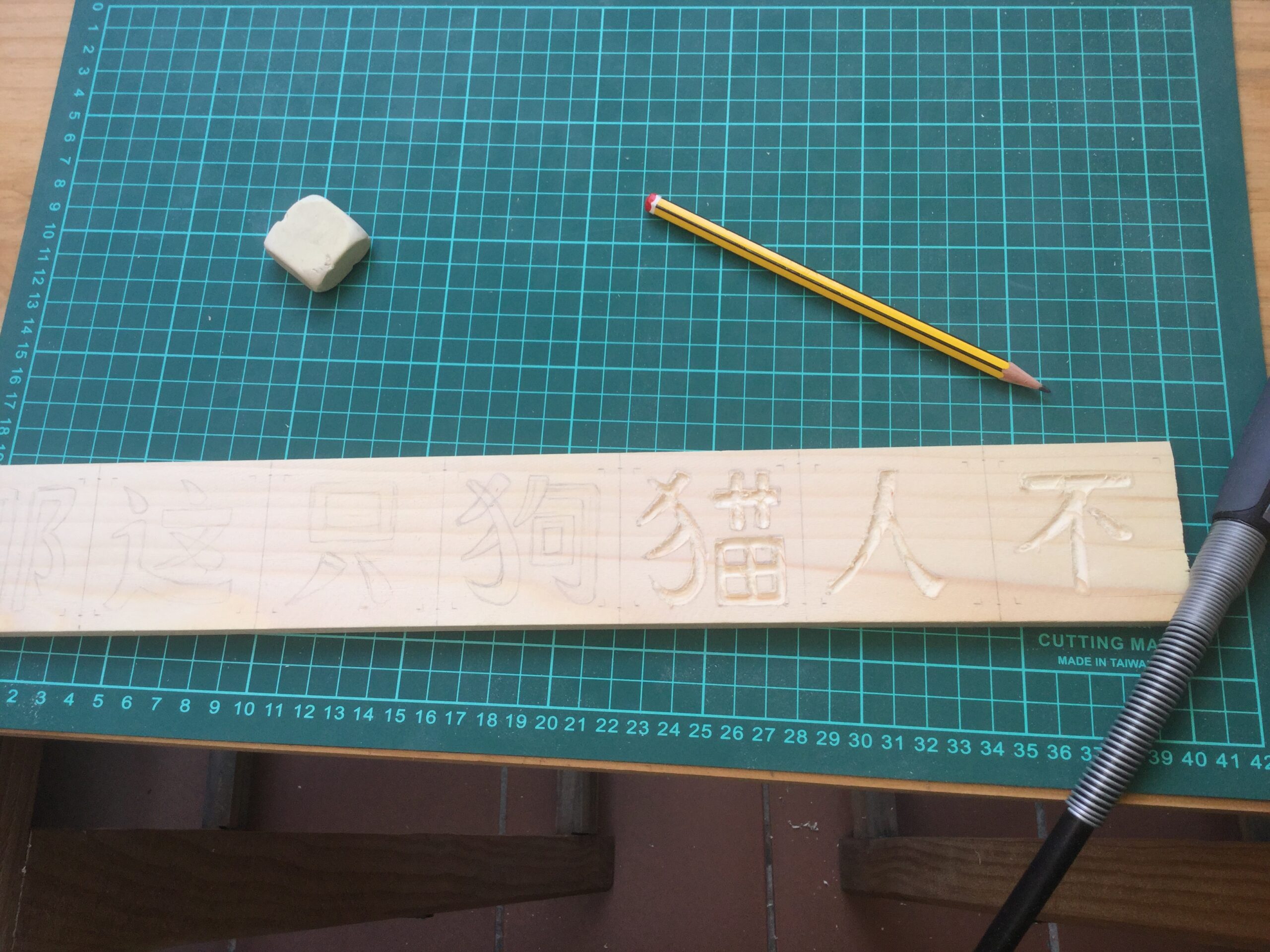

In the classroom, I begin by introducing a group of words I want my students to learn that day. I introduce the Chinese characters, their meaning and pronunciation, and I answer any question they might have. Then, it is time for the language activity game involving the sense of touch.
The children begin having a look at all the pieces I leave on their table and, for any personal reason, each student picks one. They start by feeling the Chinese characters on the pieces of wood with their eyes closed, trying to ‘see’ the shape of each character with their fingers and guess the name of each piece. At that moment, their small talk on what the pieces feel and look like is welcome. I allocate about 15 minutes of the lesson for this practice using the sense of touch.
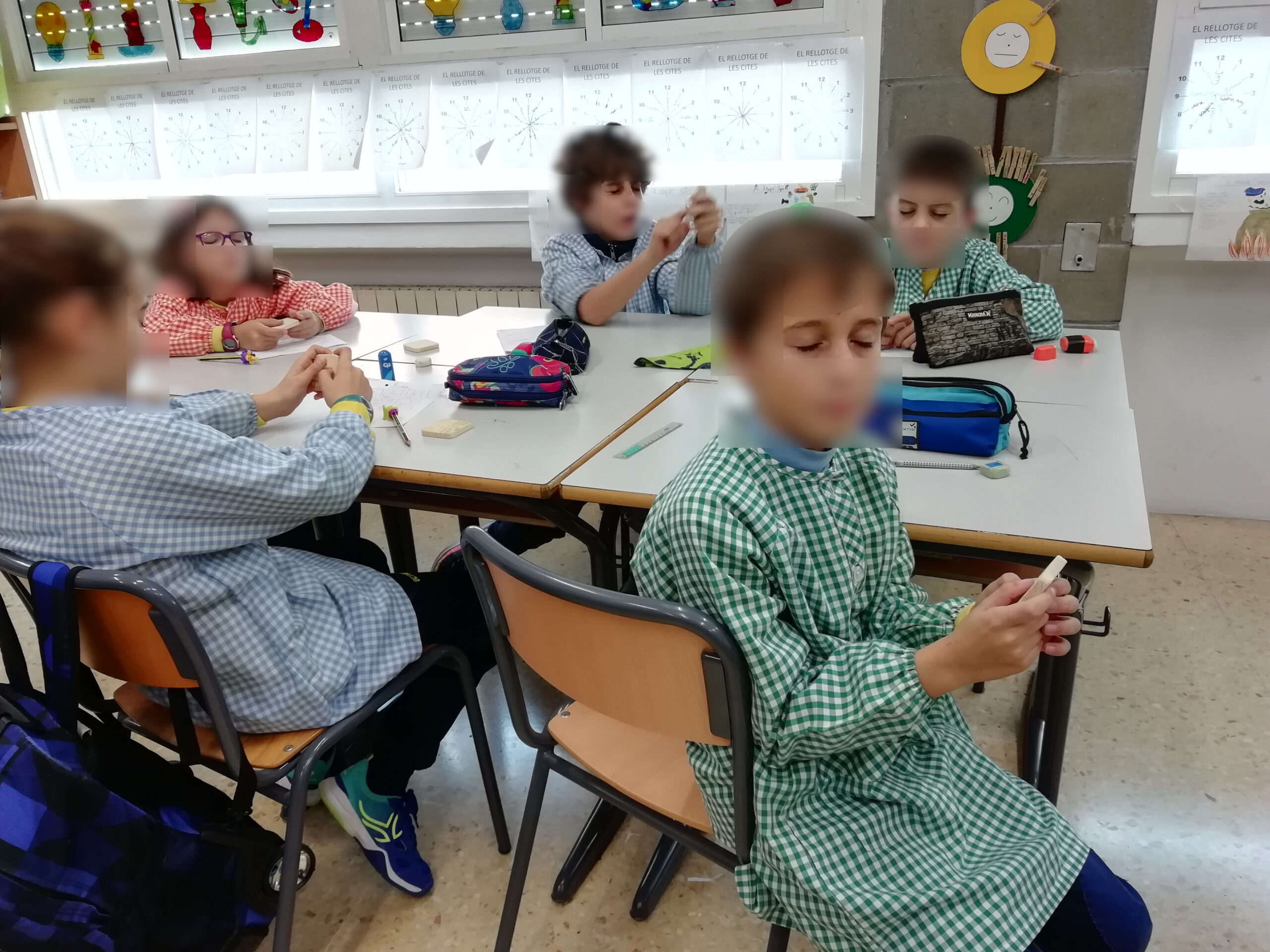

Then the students try to copy the characters in their notebooks or on a draft paper. The students must be able to write the strokes of each word following the order that I explained before on the blackboard. There is always time to look for our new words in the Students book that we use as a reference. This last step allows us to complete the task if something was omitted or if some students want to know more about any specific word or translation.

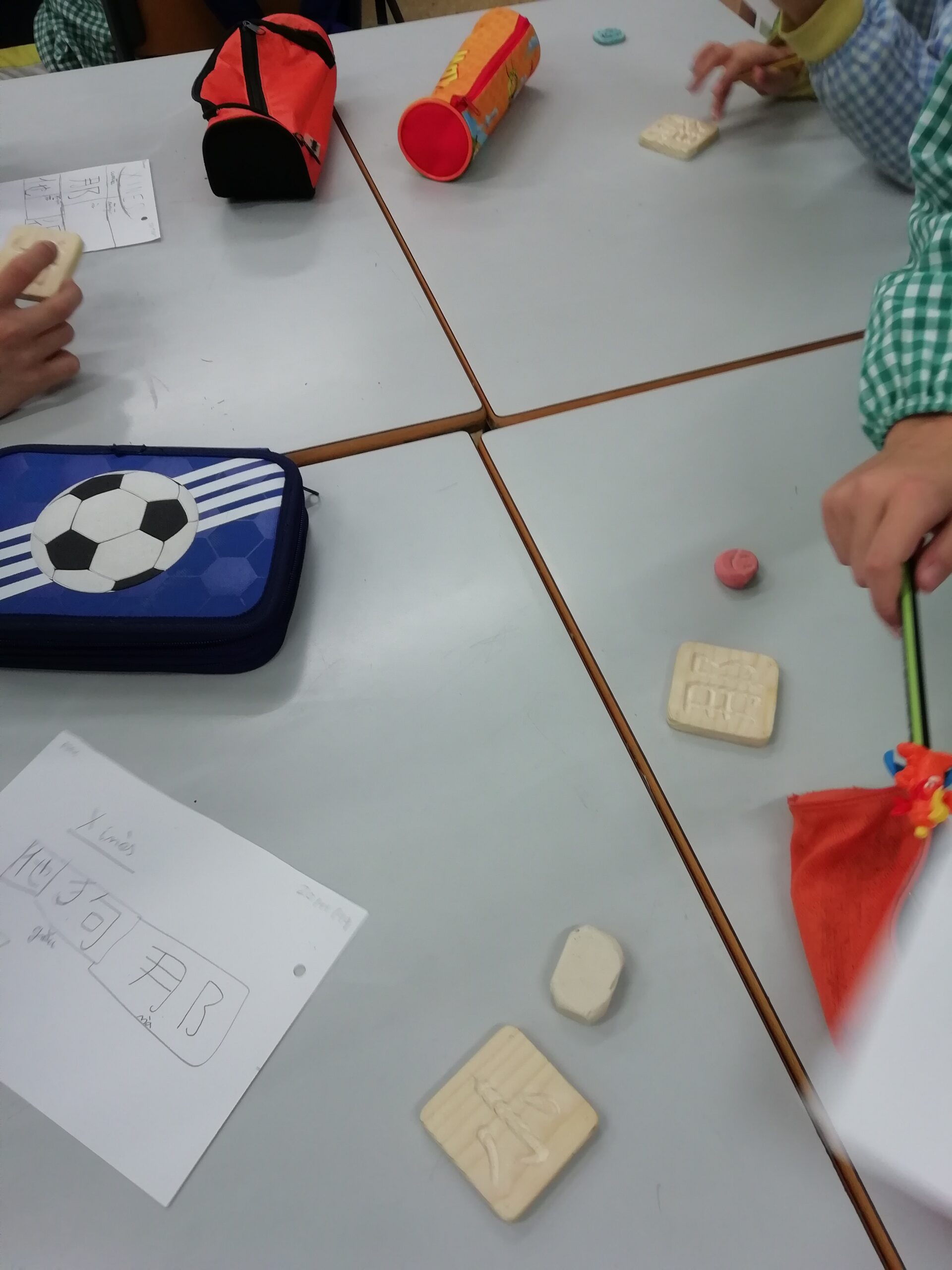
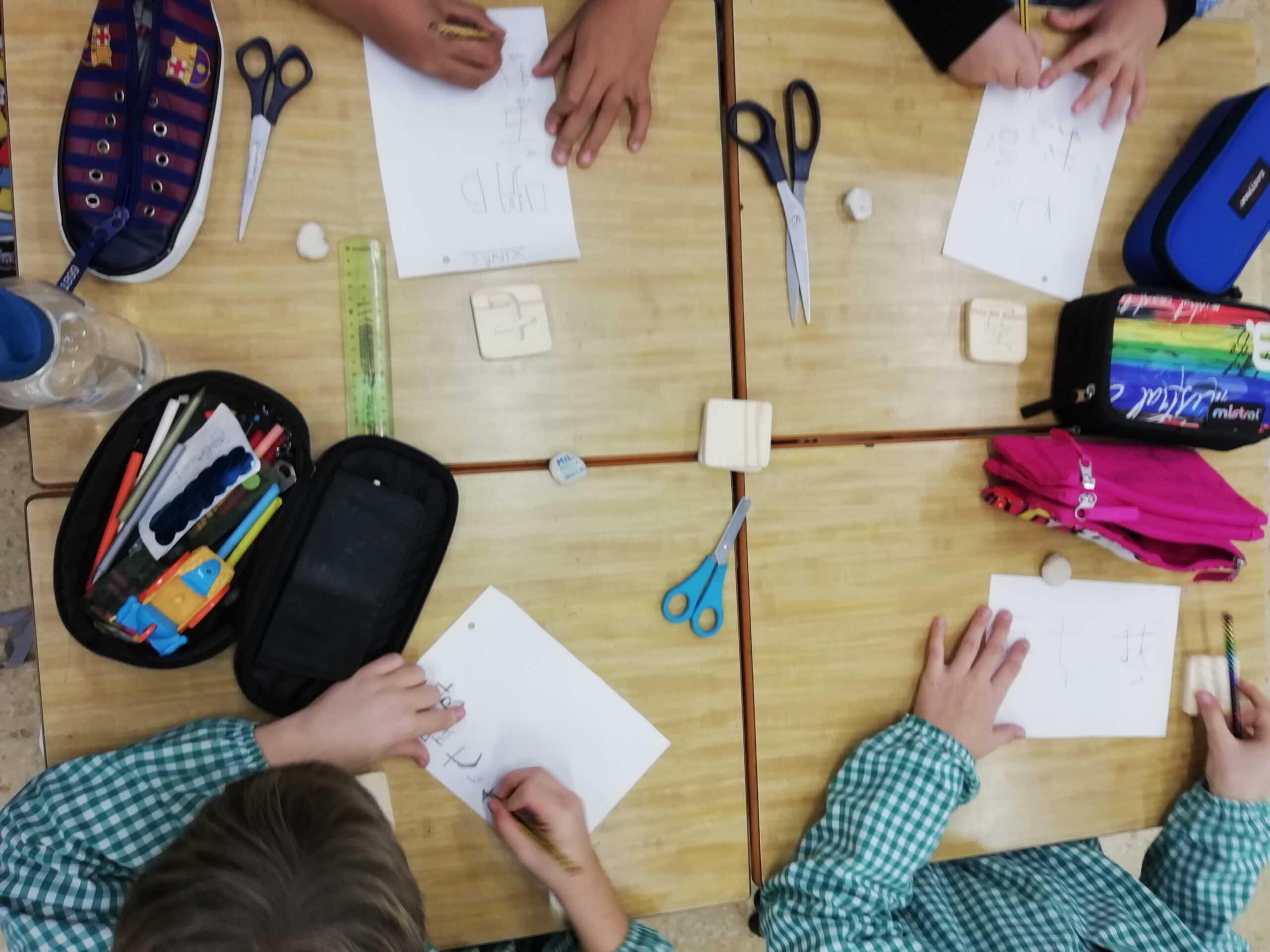
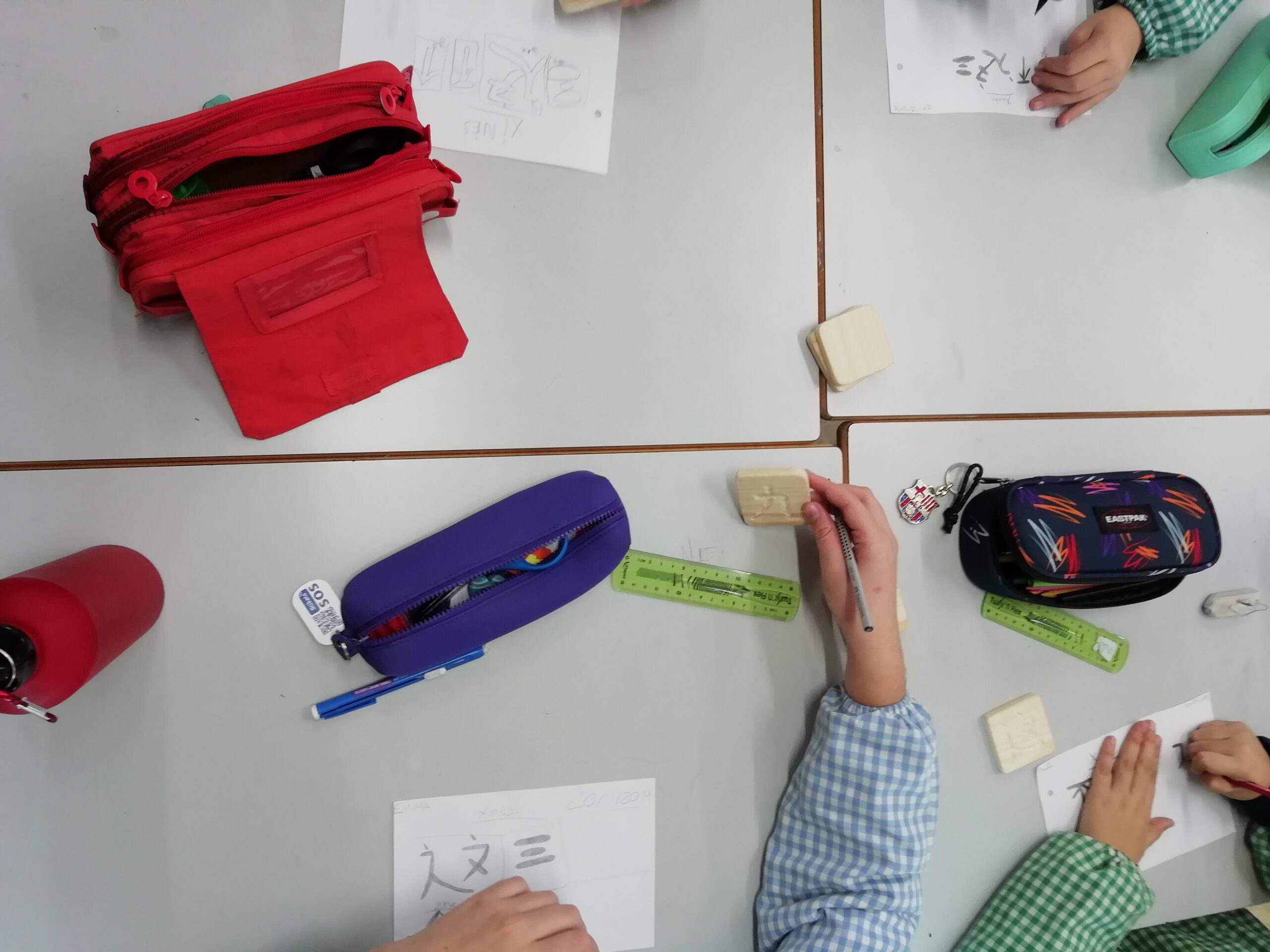
Ten minutes before the ending of the lesson, I randomly write some characters on the blackboard and we are to try and pronounce them and/or say their meaning. Eventually, as a bonus, if there is still some remaining time, or as an expanded review in the next lesson, we try to combine two or three of them to get some new short sentences, their pronunciation and their use in the Chinese language.
The complete number of strokes, the proportion of their writing, their pronunciation, and their public and open personal opinions on what they think the specific word looks like are some of the criteria that I follow to evaluate and assess my students’ commitment to the general process of the task and their specific learning results after each lesson.
Such activity may initially present a challenge to my primary school students, as they are not used to such activities in other classes. However, this initial difficulty is easily overcome. The atmosphere in the classroom is very calm and relaxed. There is often a bit of a competition going on, but in a good way: the children don’t compete with each other; they compete against themselves, as a personal challenge to try and remember more Chinese characters.
Conclusion
This language activity game I use in the classroom to teach new basic Chinese vocabulary offers many of the advantages of play-based learning mentioned above: it is interactive, engaging, involves learning through the senses, offers variety and a meaningful context for the language material presented, and creates positive associations with the learning of Chinese language.
In terms of vocabulary acquisition and communicative competences, the negotiation of the meaning of each new word is revealed in the interaction of the students with the wooden tokens I make and, later, it is modified or expanded by exchanging comments and personal associations with our classmates and the feedback I give them. This first stage of acquisition of the new vocabulary will allow us, at more advanced levels, to interact in other play-based contexts more similar to real conversations.
To sum up, the communicative competence that we are developing in the classroom follows a process that we could follow in two successive phases: a first individual interaction with objects, guided by the teacher, which would facilitate the arriving of a second one based in the interaction with other students using those words in the target language, and therefore their participation in some real dialogues.
As a teacher, I am very satisfied with the use of this material in the Chinese language classroom because it is something different and something fun. It does not feel like the ‘usual’ teaching of the Chinese characters as it is delivered to young learners in mainland China, but maybe very effective for foreign learners.
I have no statistical results yet measuring how many words my students have learned this year (and even less so with the restrictions imposed by the quarantine at the end of the course), but the most important thing for me is that I happily remember my students enjoying while at playing this activity thoroughly and were truly excited about learning new Chinese vocabulary in every lesson.
References
- Danniels E, Pyle A. Defining Play-based Learning. In: Tremblay RE, Boivin M, Peters RDeV, eds. Pyle A, topic ed. Encyclopedia on Early Childhood Development [online]. http://www.child-encyclopedia.com/play-based-learning/according-experts/defining-play-based-learning. Published February 2018. (Accessed August 4, 2020)
- Chukhlantseva, E., Järvinen-Taubert, J., Chukhlantseva, E., & Scoop, L. (2020). “I learn languages! What’s your Superpower?”, says a 5-year-old Julius from Finland 2/2 [online]. https://learningscoop.fi/i-learn-languages-whats-your-superpower-says-a-5-year-old-julius-from-finland-2-2/ (Accessed August 4, 2020)
- Play-based Learning: The Concept of Kids Learning by Playing | Resilient Educator. (2020) [online]. https://resilienteducator.com/classroom-resources/play-based-learning/ (Accessed August 2, 2020)
- Stagnitti, K., Bailey, A., Hudspeth Stevenson, E., Reynolds, E., & Kidd, E. (2016). An investigation into the effect of play-based instruction on the development of play skills and oral language. Journal of Early Childhood Research, 14(4), 389–406. [online]. https://doi.org/10.1177/1476718X15579741 (Accessed August 6, 2020)
- Ibid., Chukhlantseva, E., Järvinen-Taubert, J., Chukhlantseva, E., & Scoop, L. (2020)
- Learning with all the senses. (2020). [online]. https://www.mpg.de/8934791/learning-senses-vocabulary (Accessed August 5, 2020)
- Wortman, R. (1998). [online]. https://www.sd43.bc.ca/District/Departments/LearningServices/SLP%20Resources/Language%20Development%20Disorders/Using%20All%20the%20Senses%20to%20Learn.pdf (Accessed August 2, 2020)
Bibliography
Brown, S., & Vaughan, C. (2009). Play. New York: Avery.
